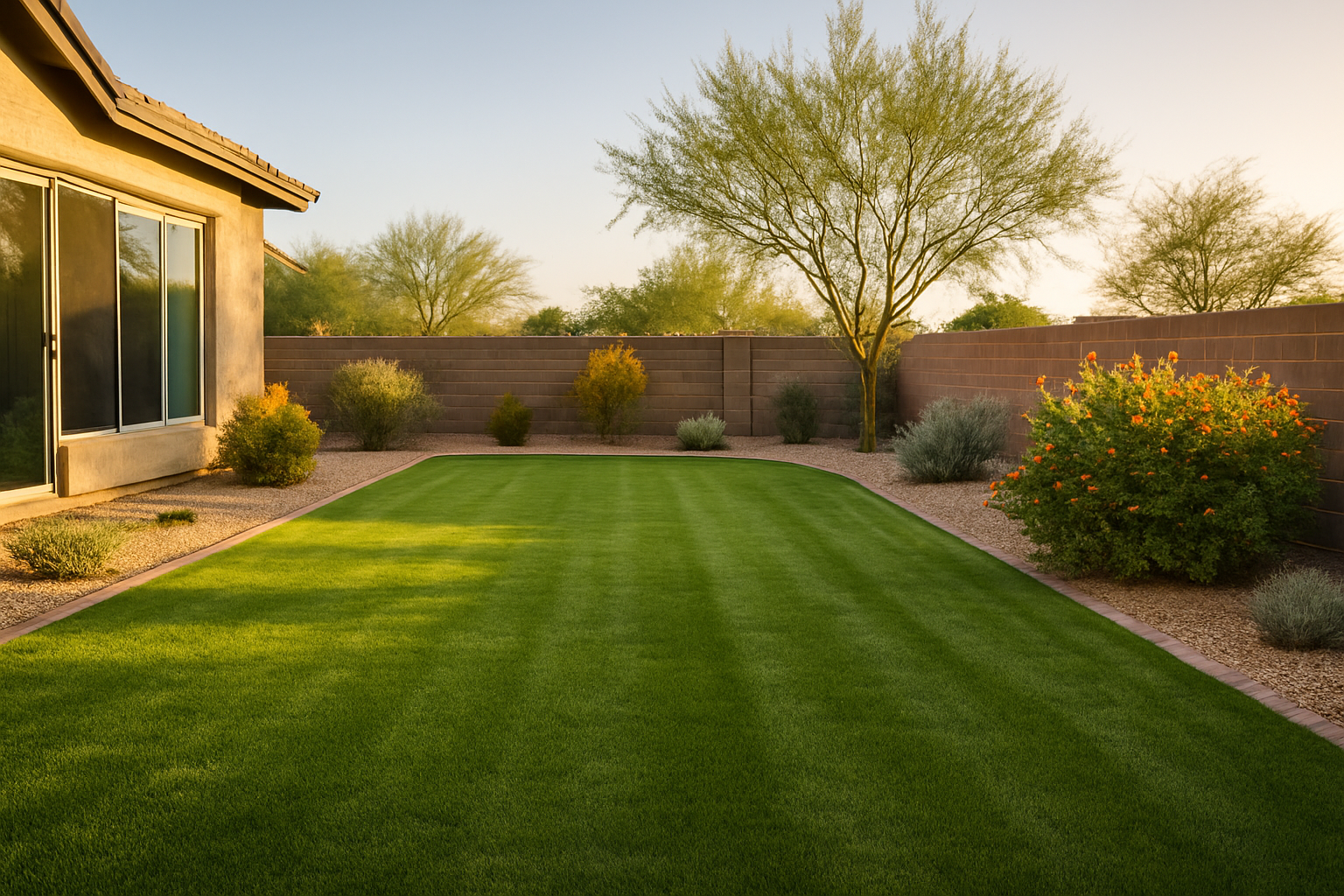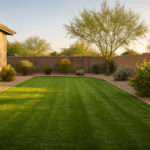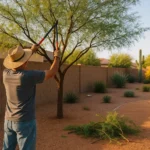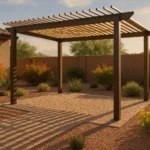Here in Gilbert, a well-maintained and level lawn is the pride of any homeowner. But even the most diligent of us can face challenges—low spots in the yard being a common one. These uneven areas can lead to a host of issues, from water pooling to the growth of unwelcome weeds. But fret not, as this step-by-step guide will help you understand how to fix low spots in your Gilbert lawn effectively.

Determining the Cause of Low Spots
The first step towards fixing low spots in your lawn is to understand why they’re there in the first place. Several factors could be at play here. It could be something as simple as soil settling over time, or something more significant like the presence of large roots or rocks beneath the surface. In other cases, it could be due to excess thatch accumulation or even creatures such as moles or gophers.
Identifying the cause can help you prevent future low spots and save your lawn from recurring issues. For instance, if the problem is due to unwanted pests, you might need to consider pest control measures alongside leveling your lawn. If it’s due to the presence of rocks or roots, removing these obstructions will be crucial.
Materials Needed for Fixing Low Spots
Before you get started on leveling your lawn, you’ll need to gather a few essential materials. These include topsoil, sand, and compost. The precise quantities of these materials will depend on the size and depth of the low spots you’re dealing with. However, a mix of 2 parts sand, 2 parts topsoil, and 1 part compost is generally a good starting point for most Gilbert lawns.
Aside from these, you’ll also need a lawn rake, a shovel, and a wheelbarrow to transport and spread the soil mix. It’s also a good idea to have a garden hose or a sprinkler system at hand to water the area after you’ve finished leveling it.
Step-by-Step Guide to Leveling Low Spots
With your materials at the ready, it’s time to get to work. Here’s a step-by-step guide to help you navigate the process of fixing low spots in your lawn.
1. Prepare the Area: Start by mowing the lawn to a height of about 1 inch. This will make the low spots more visible and easier to work with. Next, remove any debris or rocks from the area.
2. Mix the Materials: In your wheelbarrow, create a mix of topsoil, sand, and compost. Ensure it’s thoroughly mixed for the best results.
3. Fill the Low Spots: Using your shovel, spread the topsoil mix over the low spots. Be careful not to overfill. Aim for a layer of about 1/2 inch to start with.
4. Spread and Level: With your lawn rake, spread the topsoil mix evenly across the low spot. The goal here is to fill the depression without completely covering the grass.
5. Water the Area: After leveling the area, water it thoroughly. This will help the soil settle and provide a good environment for the grass to grow through.
6. Monitor and Repeat: Over the next few days, keep an eye on the area. The soil will continue to settle, and you may need to add more of your topsoil mix and repeat the watering process.
Preventing Future Low Spots
While it’s essential to know how to fix low spots in your lawn, it’s equally important to understand how to prevent them from occurring in the first place. Regular lawn maintenance is key here. This includes proper watering, regular mowing, and consistent fertilization – all practices that encourage healthy grass growth and discourage soil compaction.
It’s also important to aerate your lawn at least once a year. This process involves perforating the soil with small holes to allow air, water, and nutrients to penetrate the grass roots. It helps the roots to grow deeply and produce a stronger, more vigorous lawn.
Finally, regular inspections can help you spot and address issues before they turn into significant problems. Whether it’s pest activity, excess thatch, or simply soil settling over time, catching these early can save you a lot of time and effort in the long run.
Final Thoughts
Fixing low spots in your Gilbert lawn might seem like a daunting task, but with the right approach and a bit of patience, you can restore your lawn to its level best. And remember, regular lawn care is the best preventive measure you can take. So, get out there, enjoy the Arizona sunshine, and take good care of your lawn. It’ll thank you with lush, green beauty in return.






